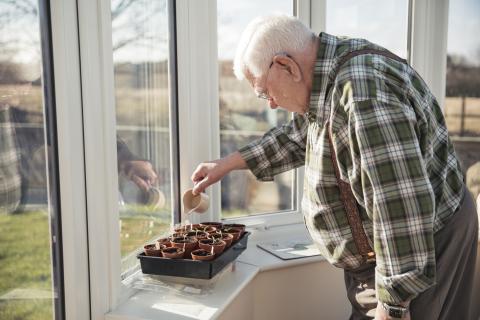
Why should you garden?
Gardening is a great way to exercise, relieve stress and grow your own fresh produce. It is also a great form of exercise since you will be bending down to move plants and twisting around to reach for tools. Spending time in nature can also help improve your mental health. While it will take some time to get your garden started, it can eventually provide you and your family with fresh fruit and vegetables at a lower cost than the grocery store.
How can you get started?
If you have a small outdoor space, container gardening is a great place to start. Container gardening uses separate containers to grow plants instead of directly planting them into a garden bed. This allows plants to be moved around easily to different areas to help them grow and get the best sunlight. You can even try growing indoors if you have a a sunny window ledge.
To start your container garden, you'll need the following items:
1. Pots
When choosing pots, old containers at home are great choices. Old cups, milk jugs, or empty cat litter containers all work! It's a good way to recycle old items and reduce spending. Remember to put holes in the bottom for good drainage if you use home containers. Poor drainage can allow water to pool at the bottom of the pots. This will drown the roots and could kill the plant.
2. Soil
A potting mix is the best type of soil to use for container gardening. This can be found in many home improvement stores in large packages. It's lightweight and fluffy, which will help give your pots good drainage. You can also add compost and fertilizer to your pots to prevent pests and give added nutrients to help your plants grow better. Be careful when using fertilizer and read the instructions on the product. Too much or too little can cause problems for your plants.
3. Seeds
Now all that's left is to choose what seeds to plant. Tomatoes, peppers, cucumbers, the choice is yours! You can find seeds in home improvement stores and grocery stores. You can even use EBT and SNAP benefits to buy seeds. Make sure to read the planting instructions on your seed packet. It will tell you the best time to plant your seeds, how much sunlight and water is needed, and how long it may take for them to grow. When you’re ready, plant your seeds, and watch as they grow.
Once your vegetables or fruits have fully grown and ripened, you can enjoy your harvest. Pick them fresh from your garden, wash them, and enjoy!

